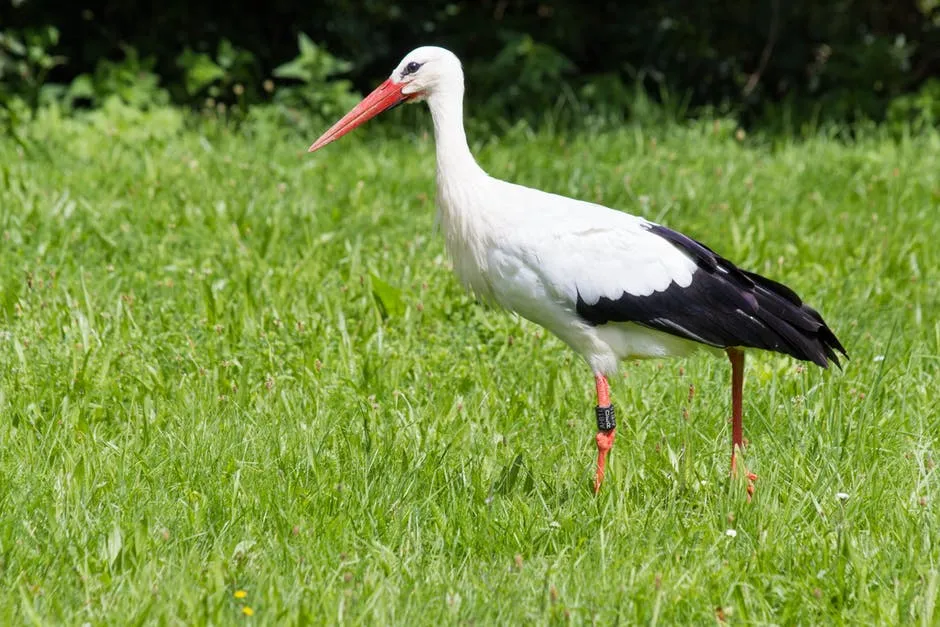Eustrongylides

Wading bird is one of the animal that will be affected by the Eustrongylides. For your information, Eustrongylidosis is a parasitic disease and this disease also can be very dangerous, this is because itcan be transmitted from animal to humans. Several species of roundworms are responsible that caused Eustrongylidosis. Red, large and easily noticeable this is a few characteristic of this nematode that can be characterized by the absence of a posterior sucker. It also can cause the high rate of death of the wading birds and the egret. At first, the parasite was detected in a fish. The parasite will be transferred from the fish to the bird in when the bird is eating the fish that affected by the parasite. The parasite may result the host to death, the parasite will penetrate into the host through their stomach lining.
Eustrongylides Ignotus, Eustrongylides Tubifex, and Eustrongliydes Excisus this is the species of the Eusrtrongylides that causing the disease(Eustrongulidosis). For your information, the Eustrongylides is a macroscopic roundworm(nematode), this roundworm is reproduce sexually year-round. The parasite lifecycle is in direct, this is because , they will infected the other species before it reach its final host. After it reach their final host, they will start to reproduce and become sexually mature. To transport them from other host and a place , the parasite will use intermediate hosts and definitive host as their vehicles. First of the stage of this parasite lifecycles start when the bird excrete their feces in the water. There is the Eustrongylides eggs within the bird feces. Then, the small living in water will feed on the eggs, for these reason they will be their first intermediate host. Within their first intermediate host, they will hatch the parasite egg and develop them into larvae. After that, the fish will feed on the first intermediate host. The fish will help them to continue their life cycles, in the fish the parasite will develop into a fourth stage larvae. The final lifecycles the Eustrongulides when the birds feed on the infected fish and it will become the parasite final host as well. Then, within their final host, they will becomes a sexually mature. Within 3-5 hours the parasite will becomes an adult, meanwhile, they will shed eggs within 14-23days after post infection. Their lifecycles will repeat itself, their lifecycles will involve in the cycles small aquatic living, fish and the last one is bird. Thanks for reading my short post and please keep following My Biologist’s Adventure .
Reference
1. Spalding, Marilyn; Forrester, D. (2009). "Eustrongylidosis". Trans. Array Parasitic Diseases of Wild Birds. Ames: Wiley-Blackwell: 289–315. doi:10.1002/97808138046.
2. [National Wildlife Health Center, 1999]
3. Spalding, Marilyn; Forrester, D. (1993). "Pathogenesis of Eustrongylides ignotus in Ciconiiforms". Journal of Wildlife Disease. 29: 250–260. doi:10.7589/0090-3558-29.2.250.
4. https://en.wikipedia.org/wiki/Eustrongylidosis#cite_ref-Ciganovich,_1999_4-0
5. [Ciganovich, E. A., Redman, P. J., & Stenback, R. S. (2013). USGS National Wildlife Health Center Field Manual of Wildlife Diseases: Birds, 29: 223-228.]
6. [Urdeş, L.; Hangan, M.; Diaconescu, C.; Ianiţchi, D.; Serafim, V. (2008). "Eustrongylidosis' occurrence in freshwater fish from the Danubian Delta area". Lucrări Ştiinţifice-Zootehnie şi Biotehnologii. Universitatea de Ştiinţe Agricole şi Medicină Veterinară a Banatului Timişoara. 41 (2): 182–186.]
7. Spalding, Marilyn (1990). "Antemortem diagnosis of Eustrongylidosis in wading birds (Ciconiiformes)" (PDF). Waterbird Society. 13 (1): 75–77. doi:10.2307/1521425.
8. Scholz, T. (1999). "Parasites in cultured and feral fish". Veterinary Parasitology. 84 (3–4): 317–335. doi:10.1016/s0304-4017(99)00039-4. PMID 10456421.
9. Spalding, Marilyn (1990). "Antemortem diagnosis of Eustrongylidosis in wading birds (Ciconiiformes)" (PDF). Waterbird Society. 13 (1): 75–77. doi:10.2307/1521425.
10. Coyner, D. F.; Spalding, M. G.; Forrester, D. J. (2002). "Epizootiology of Eustronglyides Ignotus in Florida: Distribution, density, and natural infections in intermediate hosts". Journal of Wildlife Diseases. 38 (3): 483–499. doi:10.7589/0090-3558-38.3.483.
11. Franson, J. C.; Cluster, T. W. (1994). "Eustronglyidosis in wading birds from colonies in California, Texas, and Rhode Island, USA". Colonial Waterbirds. 17 (2): 168–172. doi:10.2307/1521295.
12. [Yanong, R. P. E. (2006). Nematode (roundworm) infections in fish. Circular 91, Department of Fisheries and Aquatic Sciences, Florida Cooperative Extension Service, Institute of Food and Agricultural Sciences, University of Florida.)
13. (Martin et al. 2000)
SteemSTEM Community
This one also I love to write also guys. SteemSTEM is a community in Steemit, I am very proud with this community because @steemstem is encouraging people like me to promote and write about Science, Technology, Engineering and Mathematics(STEM) postings on Steemit.Because of this also important things that we should know as our additional knowledge. If you want to post about , Science, Technology, Engineering or Mathematics please don't forget to add #steemstem at your tag .
Join and learn about the project , Join us on steemit.chat:
(https://steemit.chat/channel/steemSTEM)
